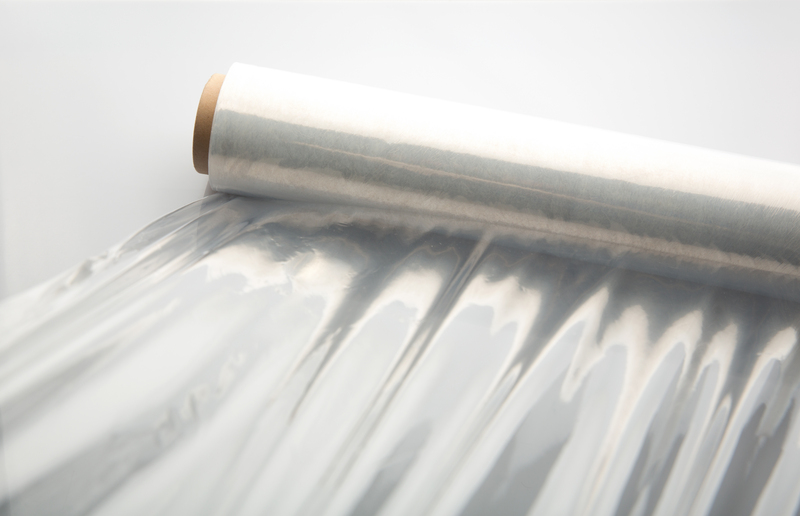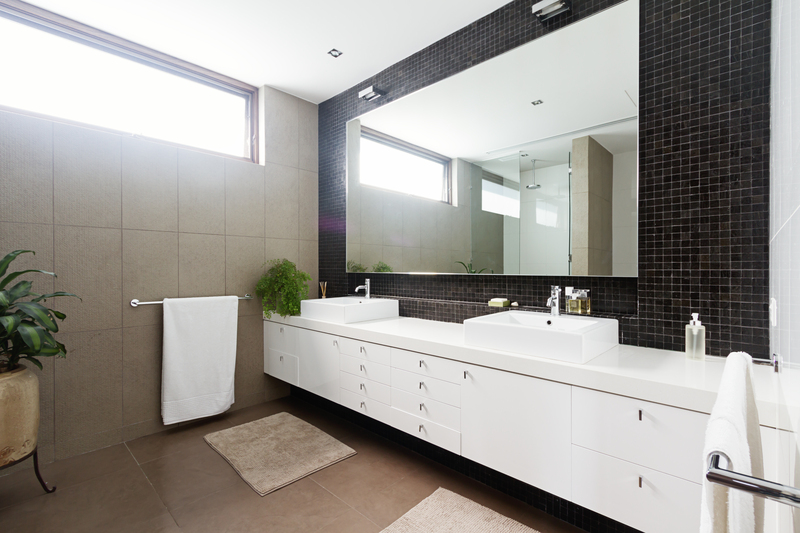Conquer the Challenge of Cleaning Burnt-on Residue from Your Stovetop
Posted on 19/05/2025
Conquer the Challenge of Cleaning Burnt-on Residue from Your Stovetop
Burnt-on residue on your stovetop can be one of the hardest kitchen cleaning challenges to overcome. Whether you're dealing with stubborn sauce splatters, scorched sugar spills, or persistent grease stains, knowing how to restore your stove's sparkle is essential for a hygienic and attractive kitchen. This comprehensive guide unlocks the secrets to removing tough burnt-on stains from your stovetop using proven methods, DIY tips, and eco-friendly solutions.
Understanding the Problem: Why Burnt-On Residue is So Stubborn
Anyone who loves cooking knows the dread of discovering burnt-on gunk fused to their stovetop. The combination of intense heat and spilt food compounds creates a solid, often carbonized layer clinging tightly to surfaces. Traditional cleaning might barely dent this barrier.
- Heat bonds food to surfaces, breaking down proteins and sugars into tough-to-remove substances.
- Grease and sugar-based spills can form as hard as rock due to caramelization and polymerization.
- Repeated cooking can make stains penetrate deeper, making the problem worse if not tackled quickly.
To successfully clean burnt-on residue from your stovetop, it's essential to use the right materials, techniques, and a bit of patience. Read on for a detailed exploration of cleaning options that work!

Assessing Your Stovetop Surface
Before you select any cleaning method, identify your stovetop surface type. Using the wrong technique could damage your appliance:
- Glass or Ceramic Stovetops: Require gentle, non-abrasive products to avoid scratches.
- Enamel-Coated Stovetops: Durable, but harsh scrubbing can dull the finish.
- Stainless Steel Stovetops: Need specialized cleaners to prevent streaks and corrosion.
- Gas Stovetops with Grates: Removable parts and deeper crevices for cleaning.
*Always check your manufacturer's instructions before using any cleaning agents or tools on your stovetop!*
Essential Supplies for Cleaning Burnt-On Stains
Having the right tools and cleaners makes all the difference. Assemble these must-haves for your stovetop cleaning mission:
- Baking soda - A mild abrasive with natural deodorizing properties.
- White vinegar - Excellent for dissolving mineral and organic stains.
- Lemon juice - Natural acid that lifts stains and leaves a fresh scent.
- Dish soap - Cuts through grease.
- Non-scratch scrub pads or soft sponges.
- Plastic scraper - Safely lifts residue without damaging surfaces.
- Microfiber cloths for drying and polishing.
- Old toothbrush for detail scrubbing.
For very stubborn grime, special stovetop cleaners or razor blades may be required. Always use razor blades at a 45-degree angle and only on surfaces that allow it.
The Best Way to Remove Burnt-On Residue from Your Stovetop: Step-by-Step
Ready to conquer the challenge of cleaning burnt-on residue from your stovetop? Follow this step-by-step process for spectacular results:
1. Let Your Stovetop Cool Completely
Attempting to clean a hot stovetop is unsafe and ineffective. Wait until the surface is completely cool before starting.
2. Remove Loose Debris and Components
- Take off burner grates, knobs, and extra components.
- Brush away crumbs, ashes, or any loose material with a paper towel or dry cloth.
3. Soak and Soften the Burnt Residue
- For glass and ceramic stovetops: Sprinkle baking soda generously over burnt areas. Then, spray or pour a small amount of white vinegar or hot water over the baking soda.
- For gas burners and grates: Place removable parts in a sink filled with hot, soapy water to soak.
- Allow the solution to fizz and sit for 15-30 minutes. This softens burnt-on food, grease, and stains for easier removal.
4. Scrub Gently, But Thoroughly
- Use a non-abrasive sponge or soft scrub pad for glass, ceramic, or enamel stovetops. For gas burner grates, a more robust brush is safe.
- Employ a plastic scraper to lift up softened residue at a shallow angle to avoid scratches.
- An old toothbrush works well for corners and detailed crevices.
5. Tackle Stubborn Spots
- Reapply your baking soda paste if needed, or use a few drops of lemon juice for extra power.
- For truly hard, blackened patches, special stovetop cleaners can help. Always test in an inconspicuous area first.
- Glass cooktop owners can carefully use a razor blade scraper (at a 45-degree angle) to nudge off burnt bits.
6. Rinse and Wipe Clean
- Thoroughly wipe the surface using a damp microfiber cloth to remove all residue.
- Buff with a dry microfiber cloth for a streak-free shine.
- Replace all stovetop components only after the surface is dry.
Expert Tip:
For extremely stubborn burnt-on residue, repeat the soaking and scrubbing process as needed. Patience and persistence will yield the best results!
Alternative and Eco-Friendly Cleaning Solutions
Using Natural Cleaners for Burnt-On Residue
- Lemon and Baking Soda: Sprinkle baking soda on the stain, then rub with half a lemon. The citric acid helps dissolve burnt food.
- White Vinegar: Spray directly onto stains, let sit, and then wipe for a natural degreaser effect.
- Hydrogen Peroxide and Baking Soda Paste: Mix, apply, and let sit on burnt patches for powerful stain removal.
Benefits of Going Green
- Non-toxic for your family and safe for most stovetops.
- No harsh chemical fumes in your kitchen.
- Environmentally friendly and cost-effective.
How to Clean Burnt-On Grease From a Stovetop
Grease is notorious for combining with other food spills and hardening into a seemingly impenetrable layer. Here's how to address it:
- Mix a few drops of dish soap with hot water for initial grease removal.
- For tough spots, apply a baking soda paste or use a store-bought degreaser rated safe for your stovetop type.
- Let the product sit before wiping and scrubbing.
- Finish with a rinse and dry; buff to avoid streaks.
Prevention: How to Avoid Burnt-On Residue in the Future
The best way to reduce the effort of cleaning burnt-on residue from your stovetop is to prevent it before it hardens. Consider these tips:
- Wipe up food and liquid spills immediately after the surface cools.
- Use burner liners or drip pans on gas stovetops to catch spills.
- Clean your stovetop at least once a week - consistency beats intensity!
- Never let sugary or sticky substances sit on a hot surface.
- Regularly deep-clean components like burner caps and grates.
Professional Stovetop Cleaning Services: When to Call for Help
Sometimes, despite your best DIY efforts, burnt-on residue simply won't budge - especially after months of buildup or if the residue is chemically bonded. In such cases, professional stovetop cleaning services:
- Use industrial-strength, yet safe cleaners tailored to your stovetop type.
- Can dismantle components for deeper, more restorative cleaning.
- Restore severely burned, discolored, or scratched surfaces.
Get quotes from local specialists if your stove is heavily soiled, or if you want to maintain a sparkling, brand-new appearance without the elbow grease.

FAQs: Burnt-On Residue Stovetop Cleaning Solutions
- Q: Can you use steel wool on a glass stovetop?
No. Steel wool will scratch and permanently damage glass or ceramic stovetops. Use only soft scrubbers and gentle scrapers. - Q: Is bleach safe for stovetop cleaning?
Bleach is rarely necessary and can damage some surfaces or create harmful fumes. Use vinegar, baking soda, or specialty stovetop cleaners instead. - Q: How often should you clean your stovetop?
Wipe spills after every use; deep-clean weekly or after heavy cooking sessions to prevent buildup.
Final Thoughts: Achieve a Spotless Stovetop Every Time
Whether you love to cook or simply want a pristine kitchen, learning how to clean burnt-on residue from your stovetop is an essential skill. With the right techniques, a little patience, and regular upkeep, you never need to fear burnt spills or stubborn stains again.
Incorporate eco-friendly cleaners, adopt consistent cleaning habits, and use the advice above to keep your stovetop looking like new. Remember: tackling burnt-on gunk early minimizes both effort and damage, letting you enjoy a sanitary, shining kitchen day after day.
Now You're Ready to Conquer Stovetop Cleaning Challenges!
For more guides and expert home cleaning tips, bookmark this page and share with fellow kitchen enthusiasts. Your sparkling clean stovetop awaits!



